By Susanne von Rosenberg, UC Master Gardener of Napa County
Recently, someone asked me about the best trees to plant to help reduce climate change. Planting any tree is helpful, because all trees pull carbon dioxide out of the atmosphere and store the carbon in the form of wood. Trees also provide shade that reduces your energy needs. Areas of cities with plenty of trees can be up to 9°F cooler than similar areas lacking trees. Shaded surfaces may be 20°F to 45°F cooler than unshaded materials.
When choosing a tree with climate change in mind, there are several factors to consider. Long-lived trees are preferable because the carbon stays locked up longer. (Some carbon is released when a tree decays.) Fast-growing trees store carbon more quickly than slow-growing trees. Given that our climate is changing, it also makes sense to plant trees adapted to warmer climates.
Evergreen trees photosynthesize longer each year than deciduous trees and continue to remove carbon from the atmosphere when deciduous trees are dormant. In Northern California we must also consider a tree's water needs and fire resistance.
Finding a tree that meets all those criteria seems like a tall order, but we do have several attractive choices. Suitable large trees include coast live oak, valley oak, California sycamore, white mulberry and American red maple. All these trees grow more than 2 feet per year once established. Coast live oaks reach 20 to 80 feet in height and valley oaks reach 40 to 70 feet. Both make great shade trees. Coast live oaks are also shade tolerant.
Once established, these oaks can get by with as little as 12 inches of rain per year and can live for 150 years or more. Oaks are on the list of Napa County fire-wise plants.
Sycamores are also known as plane trees. California sycamores are native to the state and grow in a wide variety of habitats. They reach heights of 30 to 100 feet and have a spread of 20 to 70 feet. Once established, California sycamores manage with as little as 11 inches of rain per year.
These trees are known to have aggressive roots, so plant at least 12 feet from structures and sidewalks. California sycamores are long lived, with some specimens known to be more than 400 years old. Like the oaks, California sycamore are on the list of Napa County fire-wise plants.
White mulberries are not native, but they are drought tolerant, requiring as a little as 10 inches of rain per year once established. They grow up to 40 feet tall, and the canopy is approximately as wide as it is tall. Some cultivated varieties have a weeping form. The fruit can stain sidewalks, so you may want to consider a non-fruiting variety. They have a relatively short lifespan, typically 25 to 50 years.
American red maple is also not native to California. However, this tree can grow in almost any soil type and is very drought tolerant. American red maples grow about 3 feet each year, up to a height of 60 to 90 feet with a spread of 25 to 45 feet. They typically live 80 to 100 years. Maples are on the list of Napa County fire-wise plants. American red maple is used for maple syrup, although sugar maples are more commonly used.
You may wonder why I haven't mentioned coast redwoods. They are certainly long lived, fire resistant and relatively fast-growing, and they can store an impressive amount of carbon. However, they require at least 22 inches of rain per year, which means that in many areas of Napa County they will need supplemental water in dry years. You may have noticed that many redwood trees have dead and dying branches, the result of our recent dry years.
If you are interested in raising your own trees from seed, the National Reforestation, Nurseries and Genetics Resource Program has a guide that provides a good overview. It is best to use seed collected locally, as trees adapt to local conditions. Acorns from a Sacramento valley oak would probably not do as well in Napa County as acorns collected here.
Whatever tree you choose, plant it correctly to give it a good start. A seedling or young tree with a three-foot weed-free zone around the trunk may grow twice as fast in the early years as the same tree surrounded by weeds or lawn. Contact the Napa County Master Gardeners for a helpful guide to planting landscape trees.
Food Growing Forum: Napa County Master Gardeners will present a discussion of “Culinary Herbs” on Sunday, September 12, from 3 p.m. to 4 p.m., via Zoom. Register here to receive the Zoom link.
Free Guided Tree Walk: Join Master Gardeners of Napa County for a tree walk in Fuller Park in Napa on Tuesday, September 14, from 10 a.m. to noon. Limited to 12 people per walk. COVID safety protocols will be followed. You will be asked health questions and asked to sign in. Face masks and social distancing are required. Register here.
Napa Library Talk: Napa County Master Gardeners will give a talk on “Replace Grass, Save Water and Get Cash” on Thursday, October 7, from 7 p.m. to 8 p.m. via Zoom. Learn how to replace your thirsty lawn without digging it up. Register here to receive the Zoom link.
Got Garden Questions? Contact our Help Desk. The team is working remotely so please submit your questions through our diagnosis form, sending any photos to mastergardeners@countyofnapa.org or leave a detailed message at 707- 253-4143. A Master Gardener will get back to you by phone or email.
For more information visit http://napamg.ucanr.edu or find us on Facebook or Instagram, UC Master Gardeners of Napa County.
Attached Images:
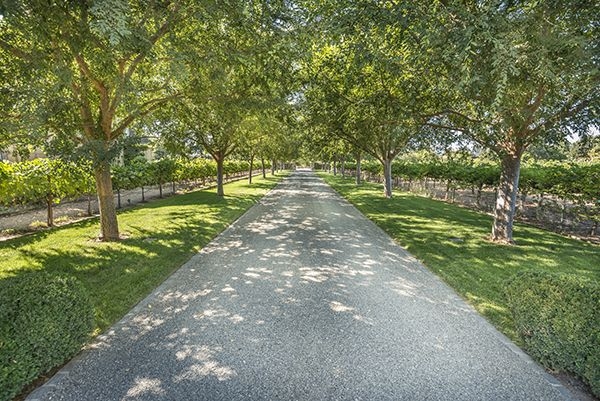
Tree shade. (pinterest.com)

Coast live oak. Plan plenty of space for growth. (canopy.com)
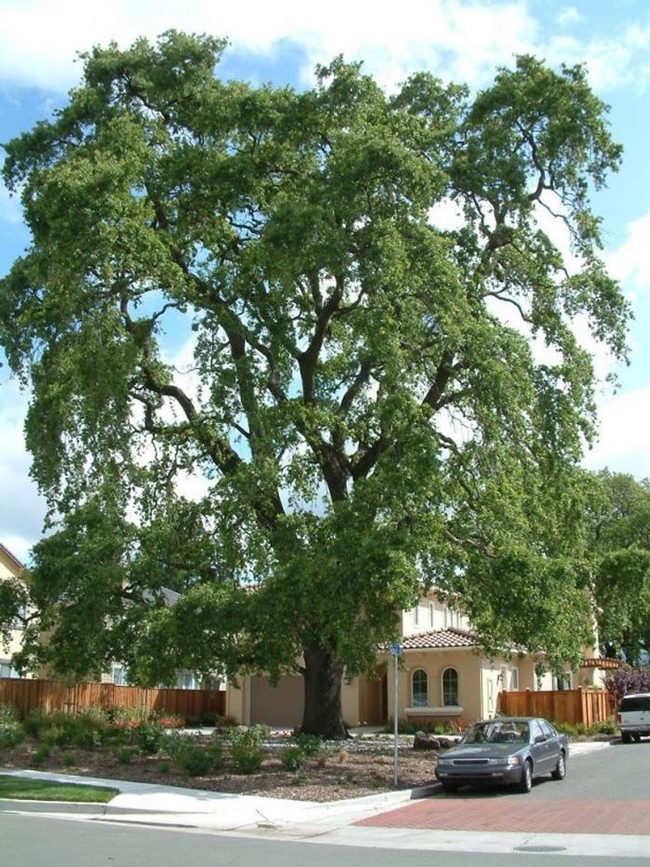
Valley oak. Also needs plenty of space to grow to maturity. (pinterest.com)
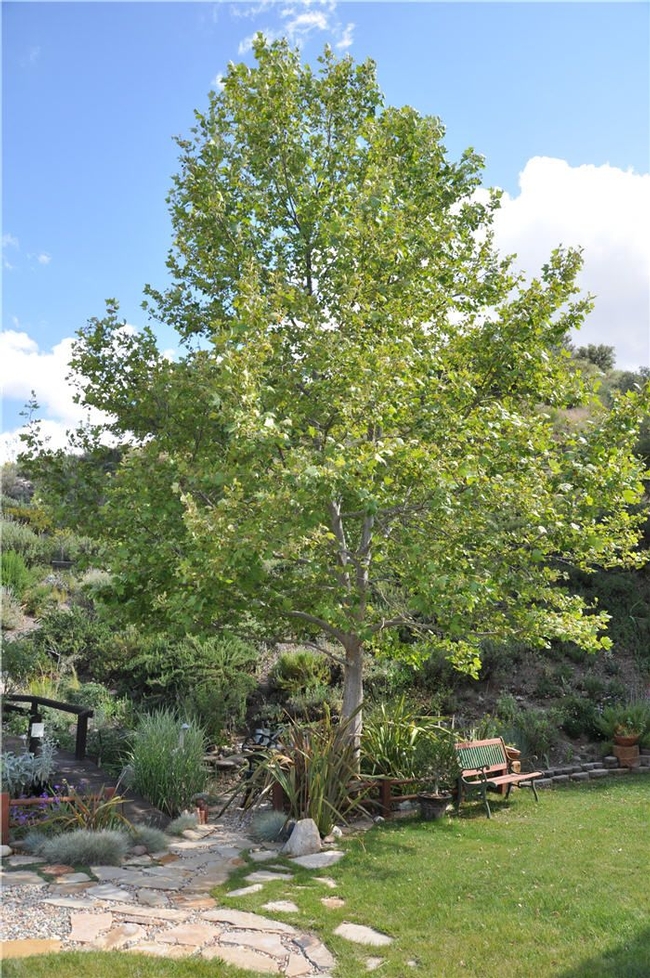
California sycamore. This is a young one. (pinterest.com)
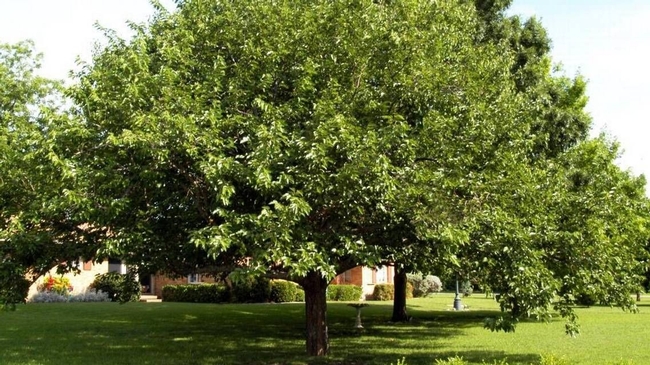
White mulberry. This is a fruitless variety. (pinterest.com)

American red maple. As you can see, this is a big tree, too. (fast-growing-trees.com)
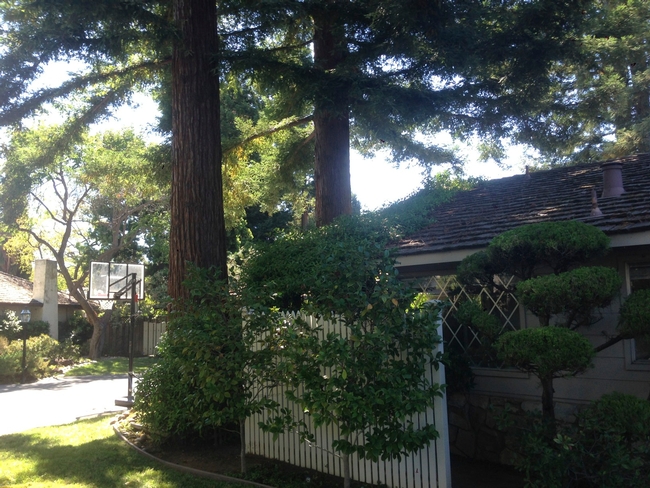
Redwood trees are not recommended as shade trees in Napa County because they require twice the amount of water as the other trees suggested in the article. (city-data.com)